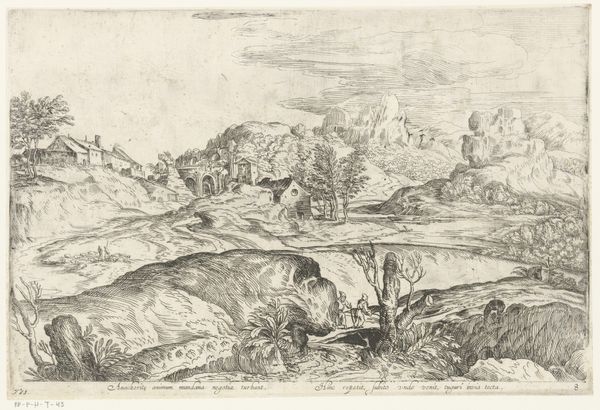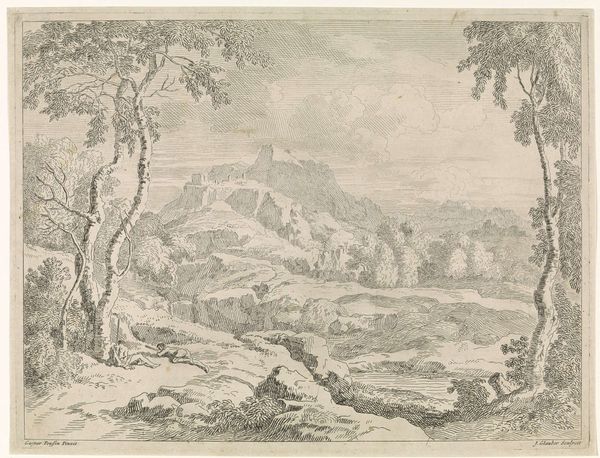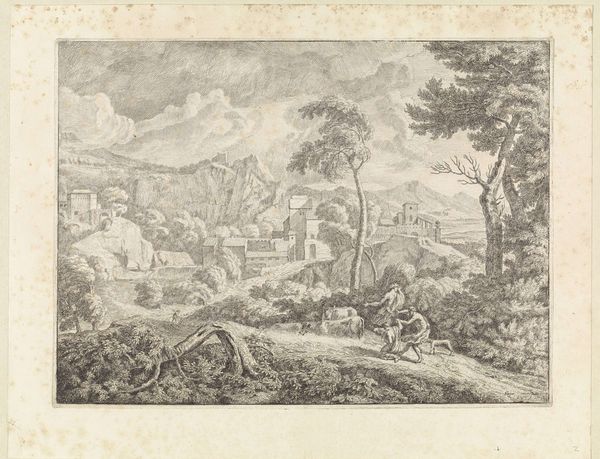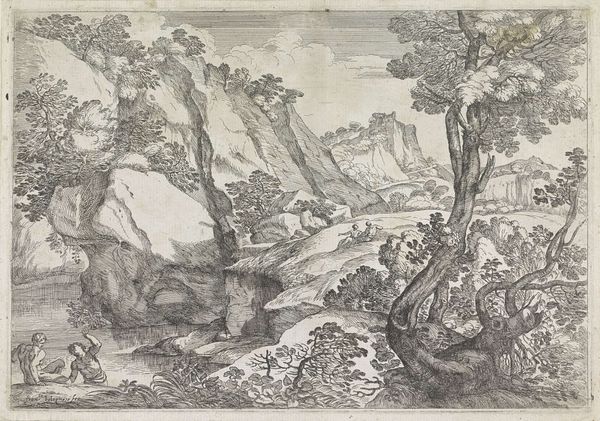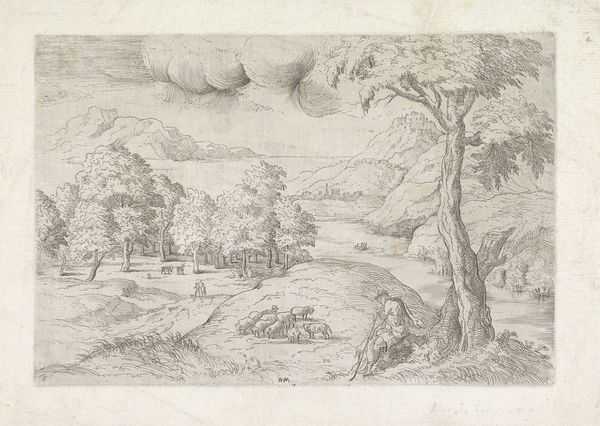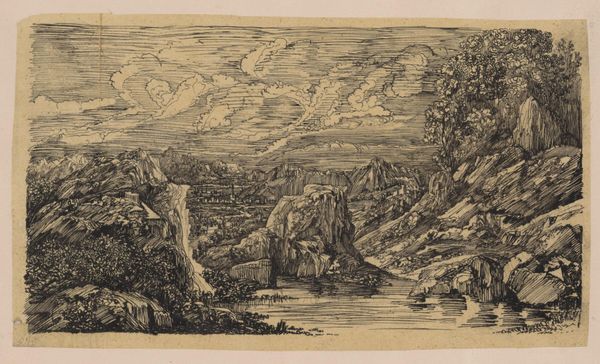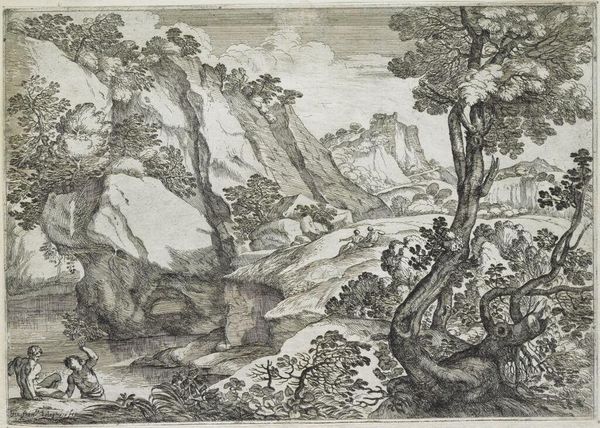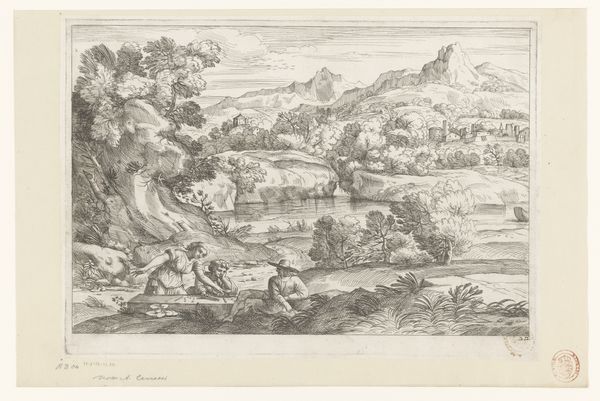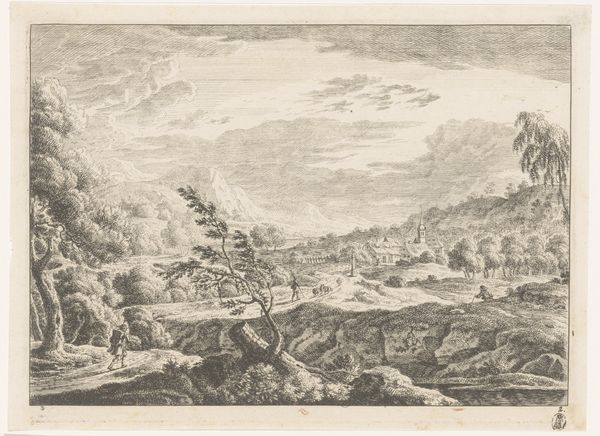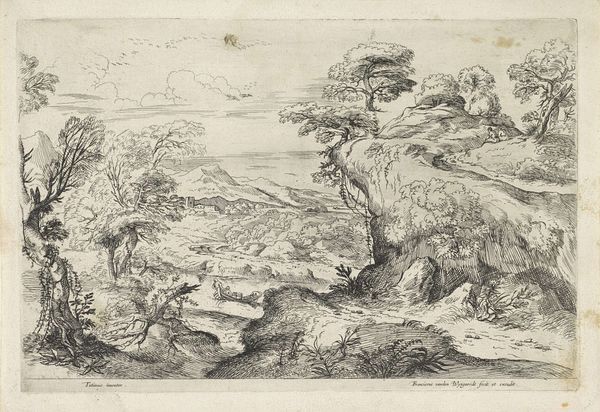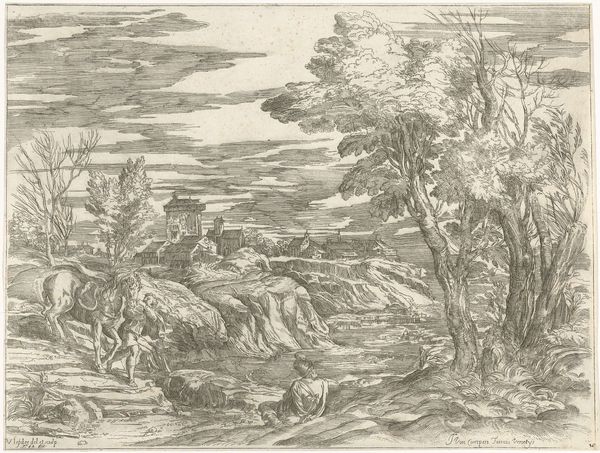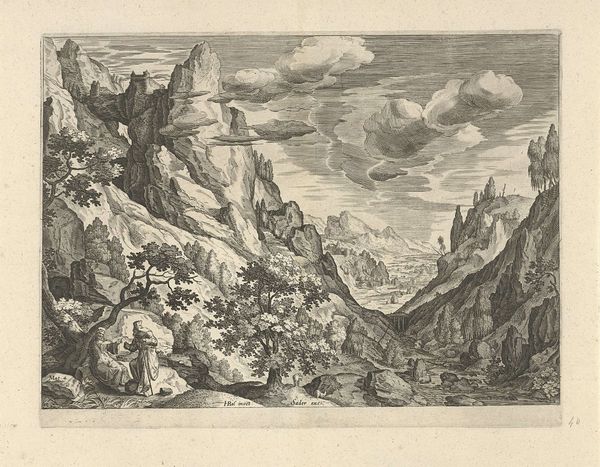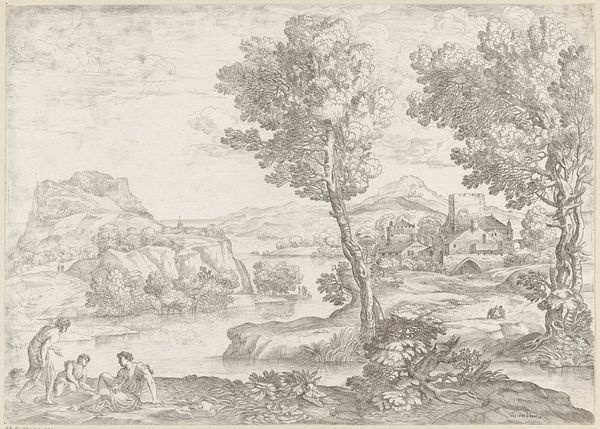
Dimensions: support: 271 x 422 mm
Copyright: CC-BY-NC-ND 4.0 DEED, Photo: Tate
Editor: This is John Warwick Smith's "An Italian Hill Town," from around the late 18th or early 19th century, housed at the Tate. It is a drawing rendered with pen, ink and grey wash on paper. What strikes me is how the artist uses perspective to create depth. What do you see in this piece? Curator: Indeed, the formal elements command attention. Note the strategic placement of the town, almost nestled within the geological forms. The interplay of light and shadow defines the contours and textures, creating a visual rhythm. Observe how Smith guides our eye through the composition. Editor: Yes, the town feels deliberately placed, but I’m unsure what to make of its relationship to the landscape. Curator: Consider the visual weight. The dark foreground anchors the composition, while the lighter tones draw us toward the distant mountains. It is an orchestration of visual elements that constructs a harmonious whole. Editor: That makes sense. I see the balance now. Curator: Precisely. Smith's command of form reveals a considered approach to representation, inviting contemplation on the structural integrity of the work. Editor: I see, thank you for clarifying the formal components. Curator: My pleasure. It is through careful analysis of these elements that we may fully appreciate the artist's vision.

